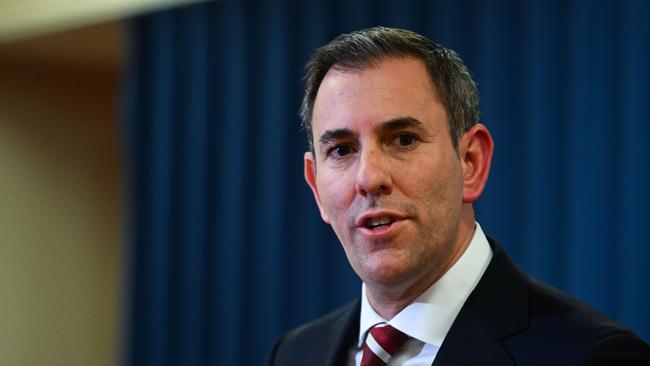Why didn’t the RBA hike?
If the RBA believed its own numbers it should have increased official interest rates. So what’s going on?

Business
Don't miss out on the headlines from Business. Followed categories will be added to My News.
If the Reserve Bank actually believed its forecasts, it really should have announced an interest rate hike Tuesday.
When it left its interest rate unchanged at its last meeting in mid-June, it expected inflation to be back below 3 per cent by the end of 2025 and then back to the mid-point of its 2-3 per cent target range by mid-2026.
That’s about as long as the RBA board should have been prepared to accept; and therefore been justified in backing-off a rate hike. Or hikes, plural.
But now, the RBA does not expect inflation to get below 3 per cent until right at the end of 2026, fully a year later than its last set of forecasts.
That’s over two years away. That should have been simply unacceptable.
Such a forecast demanded tougher action. Now.
These numbers are of course, looking through the ‘inflation fiddle’ of Treasurer Jim Chalmers’s $300 ‘cheque in the virtual reality mail’. The automatic taxpayer-funded rebate on electricity bills.
That fiddle will actually get headline inflation – as measured by the ABS and forecast by the RBA – down to 3 per cent by December.
And indeed even, to 2.8 per cent by June 2025.
But then, the fiddle expires – as the cheques are only (currently) in the mail for the 2024-25 financial year – headline inflation goes straight back up to 3.7 per cent by December 2025.
Indeed, inflation in 2025 will be even higher than it would have been without the fiddle; and will feed further inflation across the economy.
The RBA forecasts inflation comes down only to 3.2 per cent by June 2026; and then 2.6 per cent by December 2026.
This is a higher underlying – that fiscal fiddle aside – inflation path than the RBA had expected in May.
That’s the critical change: the RBA in August thinks it’s going to be harder and (at best) take longer to get inflation back even to the top of its target range, than it thought in May (and June).
This shift is captured in a change in the headline in the press statement.
In the May statement, when it last did detailed forecasts, the RBA talked of “Inflation remains high and is falling more gradually than expected”.
In June and again on Tuesday, it said “Inflation remains above target and is proving persistent”.
The critical shift from “falling” slowly to “proving persistent” poses an obvious question to the governor: well, if you now think it’s proving “persistent” doesn’t that demand tougher action?
Even if that brings you into direct conflict with the government, and all the things it is doing which are boosting inflation?
And even if you have to run the risk of tipping the economy over the cliff?
As the evidence of shrinking job opportunities; great swathes of the SME sector under really severe stress; and household budgets being stretched to the limit, suggest?
Michele Bullock and her predecessor Philip Lowe were embarked on trying to keep people in jobs and businesses in business while slowly, but clearly squeezing inflation down.
Time might just have run out, on that noble “narrow path”.
Originally published as Why didn’t the RBA hike?



